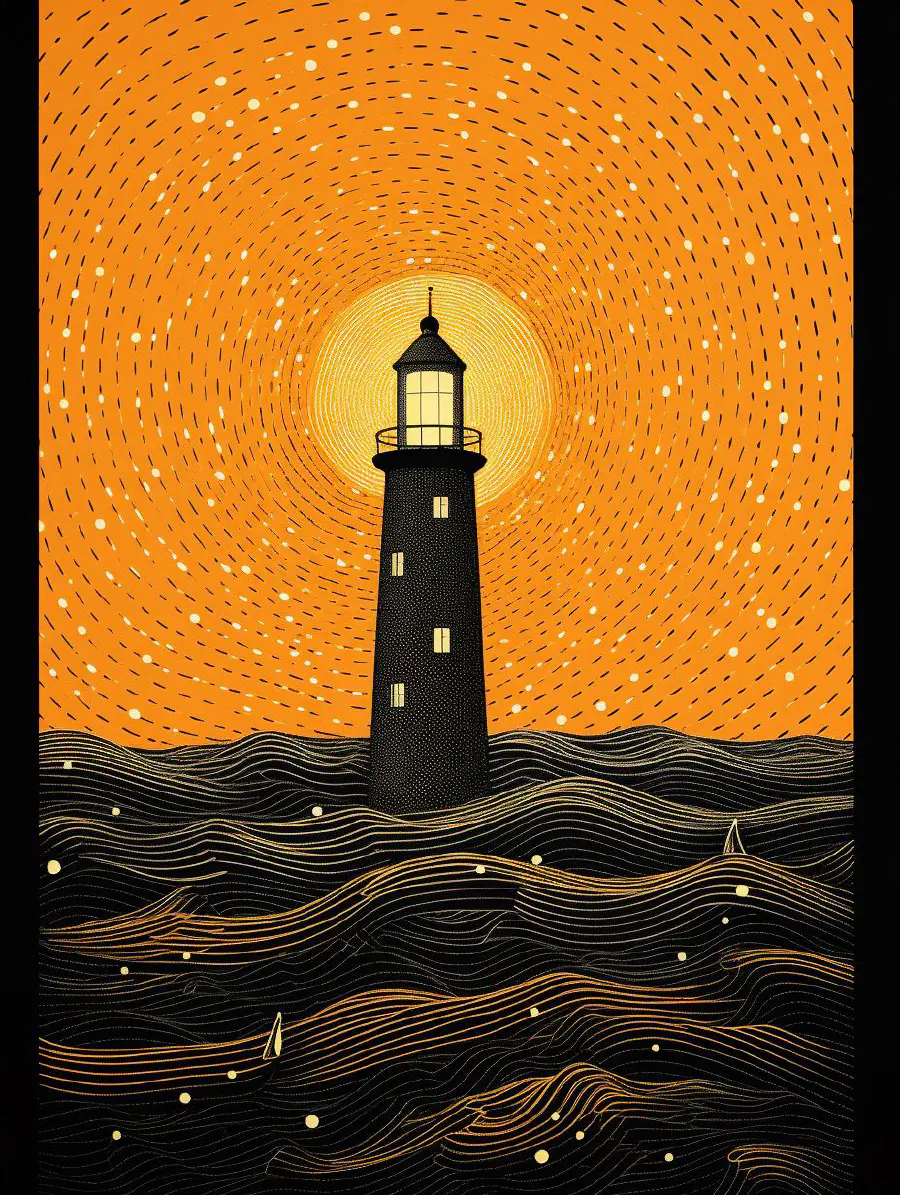
Building a Strong Foundation and Establishing Your Brand
Freelance design isn’t for the faint of heart – it’s a jungle, but you get to navigate it in the comfort of your home office. Picture this: a world where your coffee is always at hand, and inspiration is a mere keyboard’s length away. Dreamy, right? But before embarking on the scenic route to your first paying client, we ought to talk strategy. So, pull up a chair, bean bag, bed, or maybe a stool in the kitchen of the job you are trying to free yourself from - and let’s hash out a game plan to transition you from aspiring artist to in-demand designer.
Building a Strong Foundation
If you want success, you need skills people will pay for. This is the special sauce that will get you the clients and type of work you want.

Personal growth
1. Focus on personal growth
In the ever-twisting landscape of the design industry, it’s easy to get comfortable — and easier yet to plateau. The key to avoiding the dreaded creative standstill? Channeling your inner sponge. Absorb knowledge from every crevice of the industry, keeping a keen eye on trends and developing a sixth sense for understanding clients and their end customers. Pledge allegiance to lifelong learning with online resources, workshops, and meetups as your noble companions. Remember, growth isn’t just about skill; it’s about nurturing a mindset rigged for curiosity and adaptation.
2. Design fundamentals and software
Let’s cut to the chase: to be a designer, you’ve got to master the art of design. It’s about nailing those basics - try starting with colour selection and spatial awareness - these little but essential details beginners often stumble over. Build an ’eye’ through constant immersion in design landscapes, and then branch out. Regarding tools of the trade, don’t handcuff yourself to Adobe; the industry has outgrown that monopoly. Today’s market offers you a smorgasbord of options, each with its own flair. So, try to be fluid and learn multiple packages. Affinity has great, well-priced software for desktops and iPad, Canva offers a free option with decent (albeit restrictive) tools, and Figma, geared toward web and UI, has a free pricing tier. Procreate, the iPad’s design sweetheart, is also worth exploring. While their purposes and toolset vary, they all follow some common concepts. Find the apps that fit your pocket and resonate with your design spirit. It’s all about being adaptable.

Design process
3. Developing a design process
Navigating the turbulent waters of design can feel less like sailing and more like avoiding whirlpools of chaos. However, a structured design process is your compass in a sea of unpredictability. It’s more than just a workflow; it’s your professional ability to maintain quality and consistency. From ideation to prototyping, have a clear route charted. It will make you better at quoting for projects and improve your time management. So, get that process down to a fine art; future you, swamped with projects, will appreciate it.
4. Collaborating and seeking feedback
Rubbing shoulders with fellow creators and wise mentors isn’t just good for networking; it’s essential for skill refinement. Seeking honest, constructive critique will take your work from good to spectacular. Remember, two heads (or more) are better than one. So, branch out, share your creations, and welcome the barrage of fresh ideas and perspectives that come your way. It’s the shortcut to blossoming into the designer you aspire to be. It’s not just collaboration; it’s a ticket to rapid evolution.
5. Building a diverse and effective portfolio
A portfolio isn’t just a gallery of your favourites; it’s your visual resume. Picture this: you love digital painting but want to design logos. Those dream clients aren’t mind readers, so pack that folio with works that scream, “Yes, I can do this job, and I’ll do it brilliantly!” The golden rule here is to display not just what you love but what you’re aiming to get paid for. It’s like dressing for the job you want; your portfolio should wear the attire of the projects you’re courting. Keep it sharp, focused, and dressed to impress.
Essential principles for growth
1. Find credible resources
Finding reliable sources to learn from in a vast field of self-proclaimed gurus can seem like winning the lottery. However, once you know the solution, finding gold is simple: action speaks louder than words. Favour the professionals showcasing their skills over the ones just boasting about them. Be a savvy shopper; demand proof of work before opening your wallet for any course or tutorial. To master design principles, remember to choose resources that resonate with your learning style and always, always value quality over quantity. Stay sharp, and you’ll build a solid skill set and a discerning eye.

Participate in communities
2. Participating in design communities
Dive into design communities, forums, social media, or local events. It’s your goldmine for trading resources, engaging in hearty debates on the latest trends, or participating in design challenges. Challenges are great for developing a folio when starting out. You’ll have something resembling client deadlines and briefs without needing the client. Lurking in the communities could be your next big idea or a critique that is so spot-on that you’d wish you had thought of it first. So, put yourself out there; other designers are awaiting, possibly with open arms and definitely with valuable feedback.
3. Learning from leaders
Stalking might be frowned upon in most circles, but when it comes to design, it’s practically a requirement. Start filling your inbox with newsletters, your podcast library with wise words from your design idols, and your social feeds with inspiration. Keep yourself immersed, and you uncover workflows and secrets of the trade. It’s not just about staying informed; it’s about embracing the ever-evolving design world.
4. Prioritising hands-on practice
Here’s an age-old truth: practice doesn’t just make perfect; it makes permanent. So, take that trove of design principles and tool knowledge you’ve amassed and test in the real world, whether in personal projects or design challenges. Think of it as taking your new knowledge for a test drive. Hands-on experience isn’t just about getting better; it’s about making all that bookish wisdom second nature. Roll up those sleeves and get crafting; your mastery is forged in the fires of relentless practice.

Stay up to date
5. Staying up-to-date
In the swiftly changing landscape of the design industry, being in the know isn’t just trendy; it’s vital. Keeping your finger on the pulse isn’t just a nice to have; it’s a must to remain relevant and keep those paying clients coming. Whether it’s the latest trend or a software update/tool just released, staying informed is your ticket to sustained proficiency. Because let’s face it, proficiency isn’t a one-time badge but a constantly moving target. Foster a curiosity that never settles and a readiness to adapt — it’s your golden ticket to thriving. Stay sharp, stay updated, and watch your skill set evolve.
Establishing Your Brand
1. Understanding your unique value proposition
You need to carve out your niche in the vast sea of designers. It starts with a simple inward glance to pinpoint exactly what makes your design pulse race. It’s about embracing your unique flair and style that sets you apart in a crowded marketplace. Translate those strengths and distinct skills into a compelling value proposition; consider it your artistic signature. Essentially, be your own cheerleader and champion what makes you, well, you. Don’t stress if you can’t identify your point of difference right away. It will develop naturally, provided you keep practicing. In a world of carbon copies, being an original is your trump card.

Visual identity
2. Crafting a visual identity
Creating a personal logo can be an exhilarating venture. Yet, it’s worth noting that humans have a knack for connecting more intimately with faces than symbols. It’s your call whether to keep some online anonymity behind a logo or to let your own self be the icon. Remember, this is your visual handshake to the world, a carefully crafted portrayal of your essence that will naturally grow and mature as time passes. It’s more than just a branding exercise; it’s about crafting a living, breathing identity that’s both memorable and unmistakably you. You are the driver here, guiding how the world perceives you and your evolving brand.
3. Communicating your brand story
Infuse your communications with your personality, experiences, and values. It’s not just about providing a service; it’s about conveying a story that has an authentic human touch and fosters connections. Your unique journey and perspective are your ace in the hole, allowing you to craft a brand narrative that resonates with potential clients. Be honest, be you, and watch the connections flourish.
4. Consistency across platforms
Keep it tight and cohesive regarding your brand presence — be it on your website, social media, or any other outlet. It’s simple: consistency equals trust and exudes professionalism. It helps people spot you in a crowd and remember you amidst the noise. So, paint all your canvases with the same brush and watch the magic of recognition work in your favour.

Demonstrate expertise
5. Demonstrating your expertise
This may come later in your journey, but consider sharing your knowledge with content that genuinely adds value — think blog posts, workflow tips, or tutorials. Demonstrate that you’re not just part of the crowd but a leader. Share your wisdom, showcasing that authoritative edge while drawing in clients who nod appreciatively at your expertise. You’re creating a solid a content strategy, and building trust through shared knowledge.

Showcasing your work
Showcasing Your Work
Exhibiting your work is not just a should-do but a must-do. Picture social media as a bustling street market; it’s a vibrant and vivid space to flaunt what you’ve got, yet it bears the risk of becoming a grand distractor, luring you into a web of endless scrolling. The advice on the table? Don’t bite off more than you can chew. Pick a couple of platforms that resonate with your style and your potential audience’s hangout spots.
Moving on to your portfolio — your sanctuary, a digital space where you control the narrative. Initially, carving out your own corner on the web through a personalised website might seem daunting. Thankfully, platforms like Dribbble and Behance cushion your landing into the online space, offering a sturdy launchpad for your showcase.
Once you’ve gathered momentum and garnered a circle of loyal clientele. You should upgrade your operations to something more…distinguished. Firing off business emails from catdadxoxo@gmail.com might have a quirky charm, but it rings slightly amateur in the grand scheme. Stepping up to a personalised domain amplifies your professional image and sends out a broadcast that says, “I’m not here to play; I’m here to stay.” Think of it as swapping out your casual jeans for a tailored suit — you’re still you, but now with an added layer of sleek sophistication that says you mean business.
The Wrap Up
In wrapping this up, embarking on a freelance design venture is like constructing a castle; it demands a rock-solid foundation and distinct, memorable contours that can be seen from miles away. It’s about honing yourself, becoming a master of the tools and principles that dictate design paths, and developing an audience. Consider it a pledge to yourself to keep evolving, embracing the grind with a stoic smile, because success isn’t handed down; it’s meticulously built, one disciplined brick at a time. Forge ahead; remember, it’s a marathon of persistence, not a sprint of enthusiasm.

About the author
Head of Type Gang (HOTG)
An experienced designer and agency owner, I've had a successful career spanning freelance to creative direction roles. I've reviewed countless portfolios and understand what attracts clients. Helping others succeed is what makes me happy. That's what I'm trying to do with Type Gang.
About Type Gang